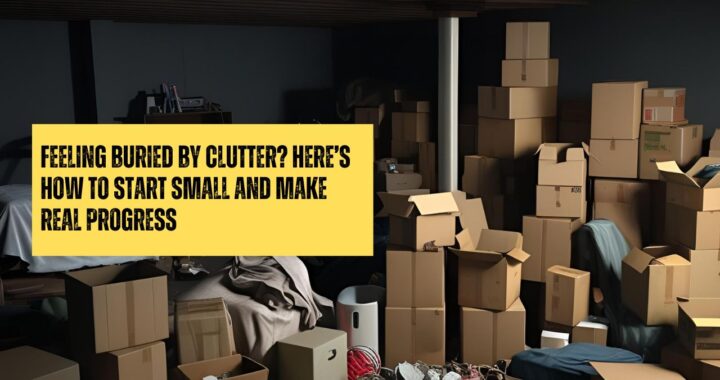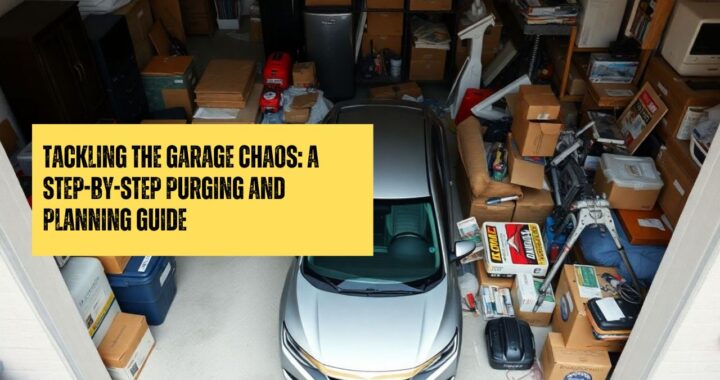Does the change of seasons also mean chaos in your closets and storage areas? One minute you’re searching for sandals buried under winter boots, the next you’re tripping over snow shovels while trying to find the lawn mower.
Managing the “stuff” that comes with different times of the year can feel like a constant battle.
But what if swapping out your seasonal items could be less of a headache and more of a smooth transition? Having a simple process can make a huge difference. It helps you clear out clutter, make space for what you actually need now, and know exactly where your off-season things are when you need them again.
Let’s walk through how to handle the seasonal shift like a pro.
Timing Your Switcheroo
When’s the best time to tackle the seasonal swap? Ideally, before the new season fully hits. Waiting until the first scorching day of summer to put away winter coats, or digging for mittens during the first snowfall, just adds stress.
Try to plan the switch during those in-between weeks – early spring or early fall. Pick a weekend or a couple of evenings when you have some focused time. Doing it proactively makes the whole process feel less frantic.
Gather Your Seasonal Squad
The first real step is to bring all the items related to the outgoing season together in one place. If you’re putting away winter stuff, gather all the heavy coats, boots, hats, gloves, snow pants, sleds, etc., from wherever they might be hiding (closets, mudroom, car trunk).
Seeing everything together gives you a clear picture of exactly what you have. This prevents finding a stray sweater or forgotten pair of boots after you thought you were finished.
The Big Question: Does it Make the Cut for Next Year?
Now comes the most important part: evaluating each item before deciding its fate. Don’t just automatically pack everything away! Pick up each piece of clothing, gear, or decoration and ask yourself honestly:
- Did I actually use or wear this last season? (If not, why not? Will that change next year?)
- Does it still fit me / my family members?
- Is it still in good condition? (Any irreparable stains, tears, broken zippers?)
- Do I (or we) still actually like it? (Styles and preferences change!)
- Is it a duplicate? (How many pairs of snow boots does one person really need?)
This evaluation step is crucial. It stops you from holding onto things you no longer need, use, or love, freeing up valuable space.
Making Three Piles: Store, Keep Out, or Let Go
Based on your honest answers, sort each item into one of three categories:
1. Store: These are the keepers! Items that are in good shape, fit well, are still liked, and will definitely be needed when this season rolls around again.
2. Keep Out: Some items might work for multiple seasons (like light jackets or certain shoes), or maybe you pulled something out that actually belongs to the current season. These stay accessible.
3. Let Go (Donate/Discard): Items that didn’t pass the evaluation questions. If they’re still in usable condition, set them aside for donation. If they’re broken, worn out, or stained beyond repair, it’s time to discard them responsibly.
Be decisive during this stage. The goal is only to store items you genuinely anticipate using next year.
Prep Work: Setting Items Up for Success
Before you put the “Store” pile away for its long rest, give those items a little TLC.
Clean Everything: Launder clothes, wipe down boots and gear. Storing items clean prevents stains from setting, discourages pests, and avoids unpleasant musty smells when you retrieve them months later.
Quick Fixes: Notice a loose button or a small tear? If it’s an easy fix, do it now before storing. That way, the item is truly ready to go when you need it next season.
Taking these extra few minutes saves you hassle down the road.
Finding Their Hibernation Spot
Now, think about where the “Store” items will live during their off-season. The key is to keep them all together in a designated out-of-the-way area. This might be a high shelf in a closet, a specific section of your basement, or a corner of the garage.
The goal is to get them out of your prime, everyday space. Grouping all the off-season items together makes them easy to find when it’s time to swap again. Avoid scattering them across multiple random spots, that’s how things get lost!
Smoother Seasons Ahead
Taking the time to intentionally shift your seasonal items – evaluating what to keep, cleaning items properly, and designating an off-season zone makes a huge difference. It reduces daily clutter, simplifies finding what you need now, and makes the next seasonal transition much less stressful.
A little process goes a long way!
Tote-Ally Organized
Tote-Ally Organized designs and builds custom residential tote racks for garages, basements, and storage spaces. Our heavy-duty racks maximize space, improve organization, and include ToteScan QR labels for easy inventory management, homeowners declutter with confidence.
Feeling inspired to organize your garage or basement storage? If you’re in the Omaha or Lincoln area, let’s talk about creating a custom tote rack system tailored to your space and needs.




